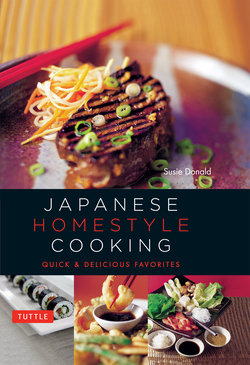Читать книгу Japanese Homestyle Cooking - Susie Donald - Страница 6
На сайте Литреса книга снята с продажи.
ОглавлениеJAPANESE COOKING UTENSILS
Bamboo rolling mat (Makisu): Widely available from Asian supermarkets and very inexpensive, this simple bamboo mat is a must-have utensil for rolling rice inside wrappers of seaweed and for rolling Japanese omelets.
Makisu
Fish-bone tweezers (Hone nuki): A pair of flat-ended tweezers is always present in a Japanese kitchen for deboning fish.
Hone nuki
Hotpot A circular clay pot with a cover, used for cooking soups and stews. It can be placed directly over a gas flame or on an electric hotplate. Its main advantage is that it can be transferred to the table, where it will keep food hot during the meal. Substitute with an earthenware casserole pot or a Dutch oven.
Omelet pan The Japanese omelet pan is usually square-shaped, about 1 inch (2.5 cm) deep, traditionally used for making sushi omelets. It can be substituted by a conventional round skillet about 10 inches (25 cm) in diameter; trim the sides of the omelet once it has been cooked to make it square.
Rice-cooling bowl (Hangiri): This low, wide wooden bowl is used to cool cooked rice to give it the desired texture. The wider the bowl, the better to separate the rice grains.
Hangiri
Rice paddle (Shamoji): The wooden rice scoop is used to spread cooked rice in the hangiri to cool. It traditionally represents domestic authority; whoever controls the shamoji in a Japanese household is in charge of the household affairs.
Shamoji
